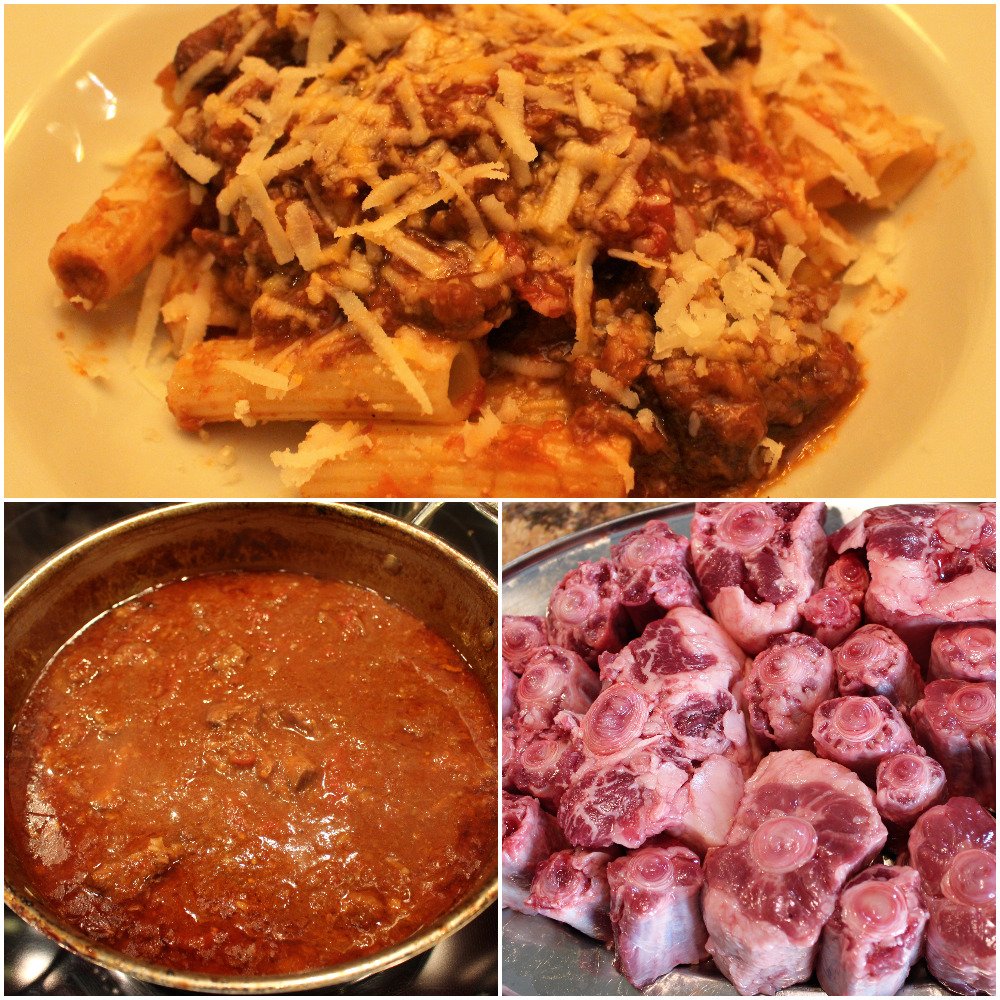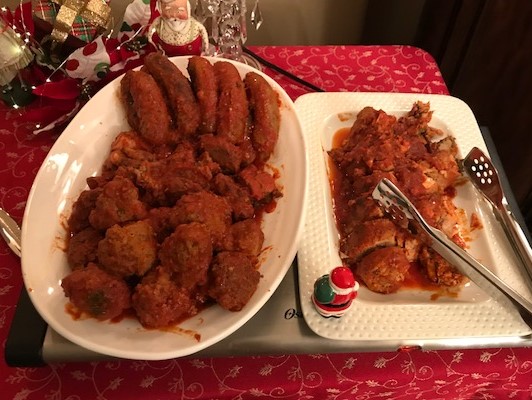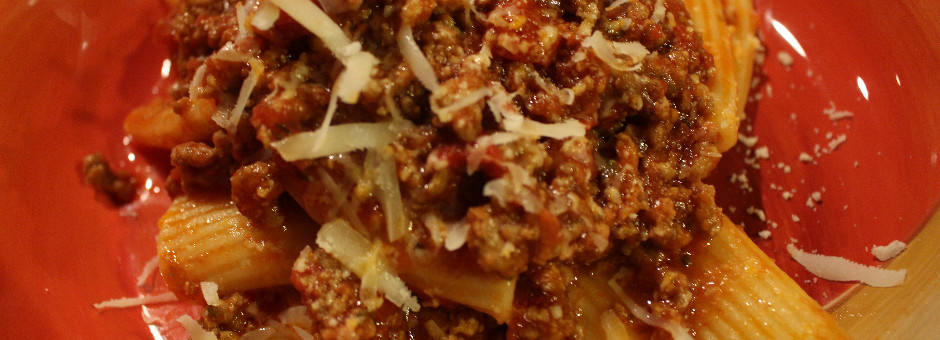Pasta with Red Tomato Sauces
-c20ad.jpg)
Marinara sauce is among the simplest and quickest of all red sauces. The basic recipe does not overpower. It makes a delicate sauce perfect with all dried and fresh pastas, potato gnocchi, stuffed ravioli, and tortellini. It also makes a great dip for breaded poultry, fried calamari, and vegetables nuggets. Also use it to top Chicken or Veal Milanese, or Eggplant Parmigiana.
Traditional…Italians take advantage of the first harvest of newly ripened seasonal tomatoes to make their freshest tasting Marinara sauce.
Premium canned tomato imported from the San Marzano region of Italy produces a fresh like alternative. Family buys imported canned tomato crushed or whole packed with tomato juice not with processed tomato puree or paste.
Mom preferred hand crushing whole creating a meatier texture.
- 4 large garlic cloves sliced.
- 1 small onion sliced optional.
- 3/4 cup olive oil
- 2-32oz. cans tomato Imported from San Marzano, Italy. See details above.
- 1/4 teaspoon red pepper flakes
- 3 8-inch fresh basil stocks with leaves
- Salt and pepper to taste.
Use a large frying pan with high sides.
Sauté garlic in 2 tablespoons of the olive oil. Discard garlic when lightly brown.
Optional, sauté onion until translucent; also discard.
Add remaining olive oil, tomatoes (hand crush if using whole tomatoes), basil stocks, red pepper flakes and a few grinds of salt and pepper.
Simmer sauce until thicken enough to stick to pasta, about 30 to 45 minutes. Discard basil.
Test for added salt.
To Serve with Pasta… When pasta is al dente (chewy), reserve about a cup of pasta water. Strain pasta and place in a serving bowl. Mix with a cup of Marinara to keep from sticking. Add some water to adjust consistency if desired.
Scoop pasta in individual serving dishes, top with ample sauce. Offer grated with Parmigiana Reggiano.
In parts of Italy, the sauce starts with a battuto, a flavor pack made with minced carrots, celery, onion and salt pork. Once cooked together, it is called soffritto.
Here's a very simple version we frequently make at home. It's the ultimate comfort food, is really easy to make, and it is simply delicious. We always double the recipe and freeze dinner portions. Italians believe leftover sauce tastes even better than the original.
- 3 large sliced garlic cloves
- 1/4 cup olive oil
- 1-pound ground mild Italian sausage without casing
- 1 1/4-pounds ground beef
- 2-28oz. cans crushed Italian plum tomatoes with puree
- 1/4 teaspoon red pepper flakes
- 1 heaping tablespoon dried Italian herb seasoning
- 2 or 3 sprigs fresh basil tied with butcher's twine
- water as needed
- salt and black pepper
- 1 pound Rigatoni or your favorite pasta
- Parmigiana cheese grated or shredded
- 2 1/2 to 3-pounds pork ribs, baby back or the taller ones, not country style
- 1/2 cup of olive oil
- 3 garlic cloves sliced
- 1 medium onion
- 2 28 oz. cans of crushed plum tomatoes with puree
- 1/4 teaspoon red pepper flakes
- 1 cup red wine
- 3 or 4 stocks of fresh basil (can be tied with butchers' twine)
- salt and pepper
- Your favorite pasta cooked al dente (I prefer penne o rigatoni).
- Grated parmigiana
- 2 or 3 sliced garlic cloves
- 1 small sliced onion
- 1/4 cup olive oil
- 1-12 oz. package Veggie Crumbles (like Morning Star Farms®)
- 1-28oz. can crushed Italian plum tomatoes with puree
- pinch red pepper flakes
- 2 sprigs basil tied
- 1 tablespoon dry Italian herb seasoning
- salt and pepper to taste
- water as needed
- ¾ cup olive oil
- 5 garlic cloves with skins
- 1 teaspoon Tuscany seasoning
- Pinch red pepper flakes
- ¼ cup oil from Peter’s Garlic Oil
- ½ medium onion sliced
- 1 28 oz. can good quality Italian imported crushed tomatoes
- 3-inch sprig fresh basil leaves
- 1 large eggplant
- Oil from Peter’s Garlic Oil
- 1 pound rigatoni or your favorite pasta

- About 6 ½ to 7 pounds untrimmed beef oxtail
- Tuscany seasoning (or rosemary, sage and kosher salt)
- ¾ cups of olive oil
- 5 garlic cloves
- Rosemary, Sage, salt, pinch red pepper flakes.
- Salt and Pepper
- Flour for dredging
- ¾ cup finely chopped carrots
- ¾ cup finely chopped celery
- ¾ cup finely chopped onion
- 3 cups chicken stock
- 3 cup dry red wine
- 2 cans imported Italian tomatoes
- ¼ teaspoon red pepper flakes
- Basil (Lucia always said “you can never add too much basil”)
- Rigatoni or your favorite pasta
- Pecorino Romano cheese
I developed this simple recipe years ago when living in Illinois. Our local grocery store periodically offered fresh plum tomatoes for 10 cents each. 40 oven roasted tomatoes, four dollars’ worth, seasoned and with garlic and basil were enough to mostly mix with pasta, with extra to top bruschetta, in antipasto, or simply snack with Italian cheeses and salami.
Meatier Italian style plum tomatoes are simply halved and tossed with olive oil, garlic, seasoned with salt and slow oven roasted. While roasting, olive oil is infused with garlic, basil and dripping from tomatoes. Concentrating also enhances tomato’s flavors.
Shriveled but still moist tomatoes and all pan juices are gently tossed with my favorite pasta. Mix with parmigiana and some of the reserved pasta water to help create a light sauce.
Optional, for a hardier meal, add shrimp, chicken, or sausages sautéed with additional olive oil or fold in roasted vegetables like eggplant, squash, or peppers all for added textures and flavors.
Originally, I prepared tomatoes in the evening and gently slow dry them overnight in 175° direct heat (not convection). In the morning I would flip them over and continue drying for a total of about 12 hours. Slower roasting is more gently to garlic and herbs and offers best results.
8 Hour Method.
-c51ce.jpg)
Ingredients:
- 3-pounds fresh plum tomatoes
- 1 cup olive oil
- 6 large garlic cloves cut in quarters
- 1-cup fresh basil, cut in strips
- 2 teaspoon kosher salt
- 1-pound pasta
- Grated Parmigiana cheese
Core and half tomatoes lengthwise.Remove tips and skin from garlic cloves and quarter each.
In a large bowl toss tomatoes with olive oil, garlic, and half of the basil.
Continue tossing while sprinkling with salt. Marinate for at least a half hour stirring occasionally.
Preheat oven to 200°direct direct heat.
Place tomatoes round side down onto a rimed cookie sheet. Pour olive oil, garlic, and basil mixture over tomatoes. Place in the oven.
After about 5 hours, remove garlic and basil. Flip tomatoes over. Continue oven drying until tomatoes are shriveled but still moist, about 8 hours total. See pictures.
Remove any loose tomato skins. If tomatoes are large, cut in half with cooking scissors.
Cook pasta in salted water until al dente. When pasta is ready, reserve a cup of cooking water and drain pasta.
Toss pasta with roasted tomatoes, contents of the roasting pan, remaining fresh basil, and Parmigiana cheese. Stir in enough pasta water to moisten and cream.
Pass with additional grated or shredded Parmigiana cheese.
Note: Oven dried tomatoes can also be used for many other applications, antipasto, topping for flatbread and puff pastry tarts, condiment for hamburgers, or an oven roasted tomato salad accented with delicate pasta, and many more.
- 1/2 cup olive oil
- 2 garlic cloves halved
- Kosher salt
- A large pot of boiling water and a bowl of cold water with ice
- 1 1/2 to 2-pounds ripe plum tomato (about 5 large per pound)
- 1 cup fresh torn basil
- 1 pound of your favorite pasta cooked al dente
- 8 oz. small fresh mozzarella balls
- Optional, shaved parmigiana cheese
- ½ cup olive oil
- 6-8 garlic cloves
- ½ teaspoon Kosher salt
- 1/8 teaspoon red pepper flakes
- 1-28 oz. can Italian tomatoes*
- 1-Cup torn basil leaves
- 1-pound spaghetti or linguini pasta
- Variation Peter's Garlic Oil (below)
- 2 tablespoons tomato paste
- 5 basil leaves sliced
- 12 large Italian plum tomato (about 2 pounds)
- Olive oil for coating
- Tuscany Seasoning
- 1-pound ziti, penne, or your favorite pasta.
- Parmigiana cheese
- 1 cup of olive oil
- about 6 garlic cloves halved, skin removed
- 1 1/2-inch-long sprigs of rosemary
- 4 fresh sage leaves

.jpg)
- Olive oil
- 1 sliced medium onion
- 4 or 5 large garlic cloves sliced
- 1 small 6-oz. can tomato paste
- 4 large 28-oz. cans plain Italian ground peeled tomatoes
- 1 cup loosely packed fresh basil chopped *
- 2 tablespoons dried oregano or Italian seasoning
- 1 cup of dry red wine (optional)
- 8 or more mild Italian sausages
- 1 - 1 1/4-pound ground beef
- 3 large eggs slightly whisked
- 1 cup or more Italian style bread crumbs
- 1/4 cup chopped fresh flat Italian parsley
- 1/4 cup grated parmigiana cheese
- equivalent of 3-1/4" thick flat pieces of pork about 8" x 6"
- chopped fresh flat Italian parsley
- dried Italian sausage or salami (Abruzzi sausage, imported whole pepperoni, Genoa salami) cubed about 1/4 inch
- finely chopped garlic
- grated parmigiana cheese
- butcher's twine

